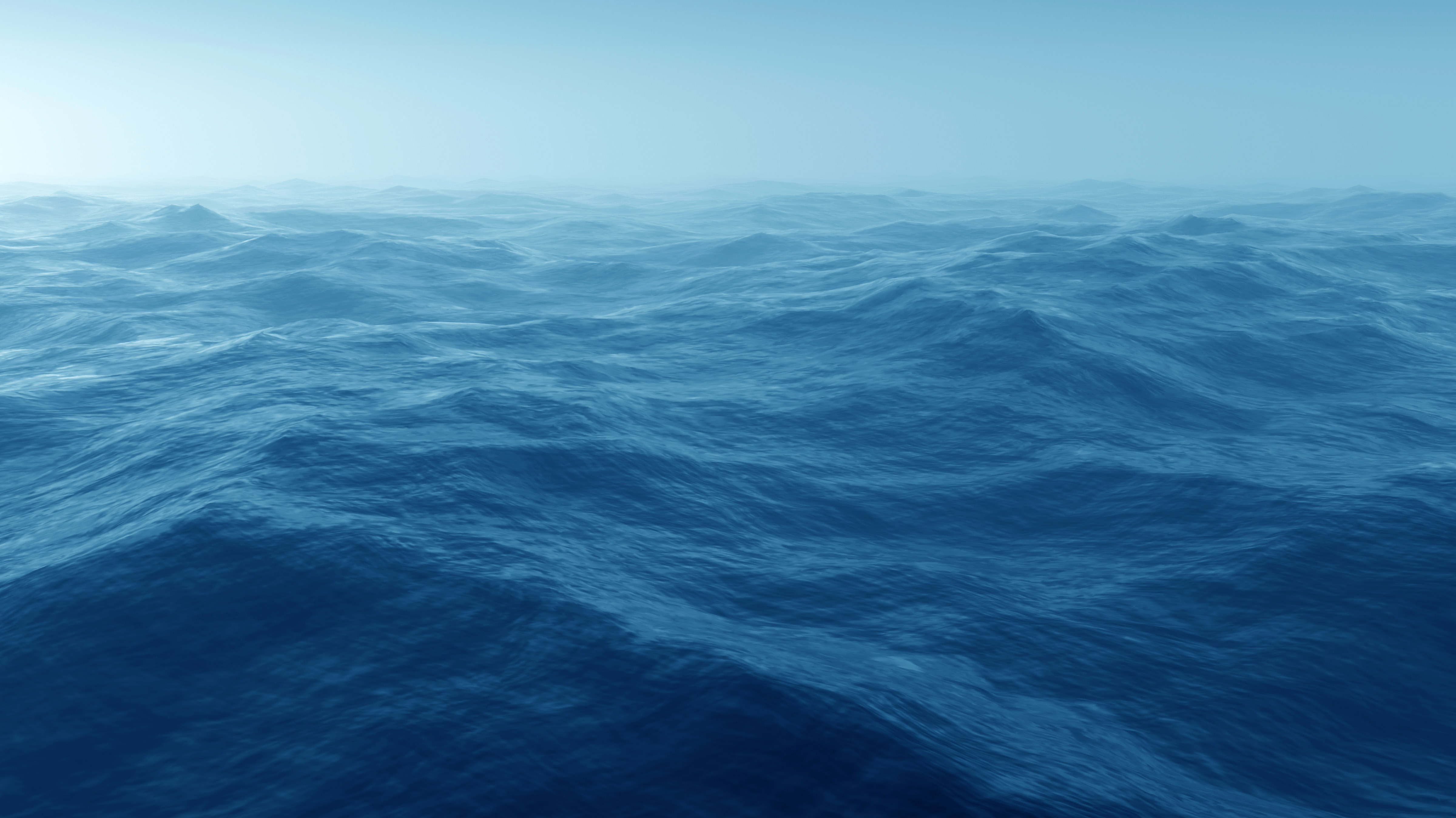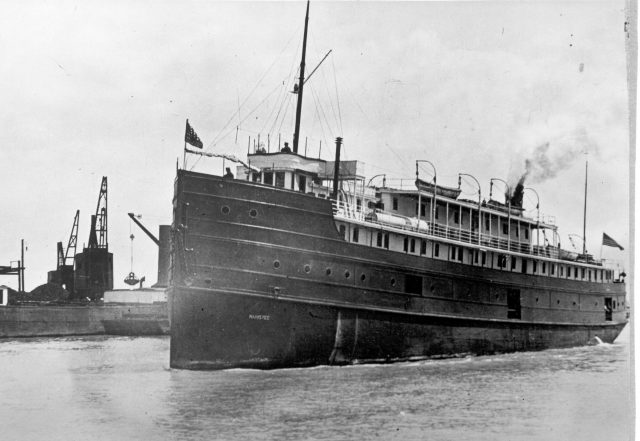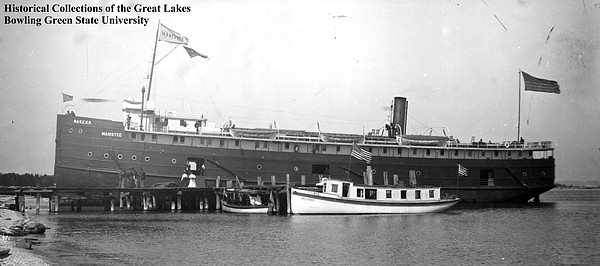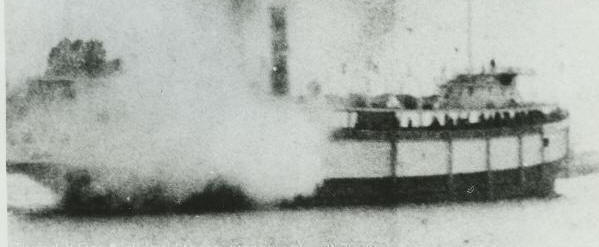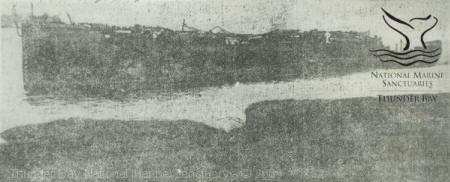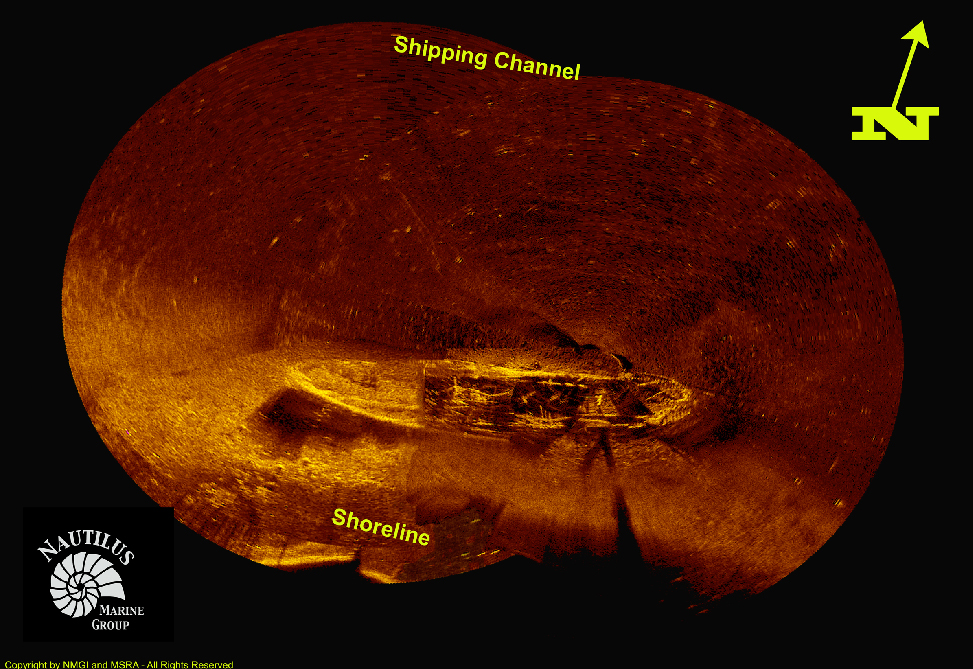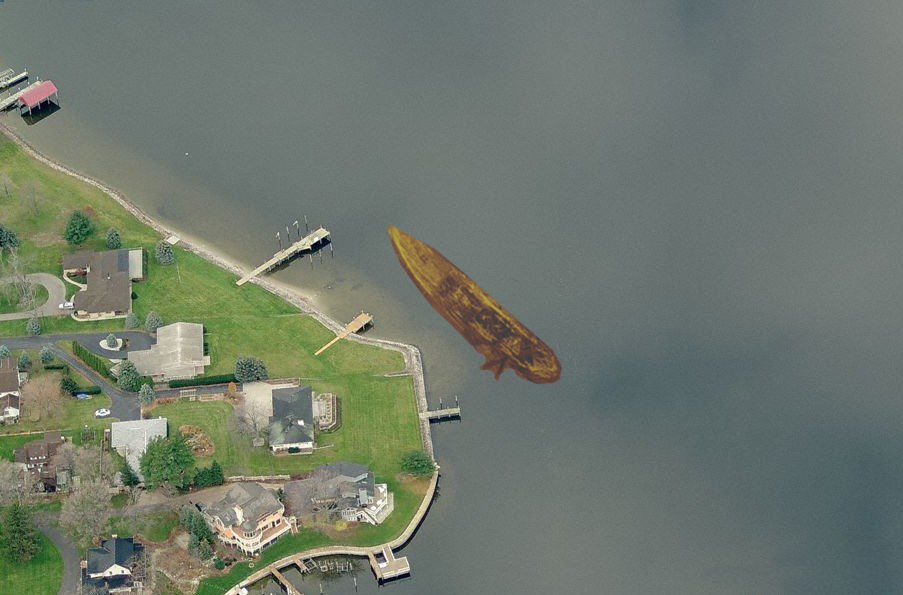The wreck of the steamer Manistee was one of West Michigan’s forgotten treasures. Thousands of people pass by her on their boats each summer. Almost all of them have no idea she is there, lying silently, in the dark depths of Spring Lake. The wreck lies just a few feet offshore but had not been surveyed for decades.
MSRA teamed up with Nautilus Marine Group to survey the wreck in May 2008. Using Nautilus’ acoustic sonar equipment, MSRA and Nautilus gathered digital data and created a mosaic image of the wreck (below). But first, the story…
The Manistee, originally named the Lora, then the Alice Stafford, was built by Jacob H. Randall for the Graham & Morton Transportation Company in Benton Harbor in 1882, with Chicago her home port. It was said she could carry 500 passengers. Her gross tonnage was 848, and she had a length of 202’ with a beam of 32’, and depth of 21.9’.
The powerful steamer had a 568 horsepower engine built by by Bryce, Bloecker & Company of Grand Haven, Michigan and a 8.5 foot x 16 foot steel boiler that could produce 100 pounds of steam pressure, powering a 9’8″ diameter propeller designed and built by Farrar & Trefts of Buffalo, New York.
Between the hours of three and four Sunday morning, the 28th of June, 1914, while the Manistee lay alongside the dock at Johnston Boiler Works in Spring Lake, Michigan, ship’s Clerk William Elkins was awakened by the sound of crackling flames.
In another few minutes he had enlisted others to assist in alerting the crew to their peril. The whole forward end of the ship was ablaze and flames belched forth from every side. None of the crew aboard escaped with more than their sleeping apparel.
The after lines were severed in an effort to retard the course of the flames. A change of wind worked the opposite effect. Within a short time after the crew had escaped, all lines holding the vessel were burned away with the stiff breeze.
Capt. C. Johnston and his crew watched the old craft sail away from the Ferrysburg docks with all their personal belongings and thousands of dollars in valuables. None escaped without considerable loss.
When the big steamer broke away from the Johnston docks she sailed slowly along the Klauss Katt landing and fired the floors, which were quenched by the crew. The crowds of spectators, who were attracted to the scene by the great light, described the last spectacle as not unlike that of a phantom ship, “aflame from end to end without a hand to guide her.”
Out across the lake the boat sailed in a scene of awful grandeur. Barely missing the yacht, Dolma, of Grand Rapids, the flaming ship drifted straight to the opposite shore near the Savidge landing and moored amidships on a sand bar.
There the flames reached their highest point and completed their ravages of destruction. After a few hours the weighted ends of the ship at first slowly then finally went down in a mighty splash and a cloud of steam, leaving but a single bit of iron rising above the lake as evidence.
Elkins and watchman Bob Larson were both severely burned about the face and hands trying to save their personal effects and arouse their crew comrades. Elkins and Larson were among those who suffered large losses in the conflagration. Diamond rings, money, clothes and other valuables were included among the various losses.
Harry R. Hillier, moving picture man of the Pathe Weekly, obtained over one thousand feet of the incident of the burning ship from the time she left the Ferrysburg docks until the hulk sank on the opposite shore of Spring Lake. As of now, this footage remains lost, but the MSRA is actively searching for it.
MSRA diver Robert Underhill relates this story:
“We used to dive it in the 70’s when it was too rough to dive the Ironsides. The club that I belonged to salvaged one of the capstans and placed in front of a dive shop in Grand Rapids. The brass capstan cover had melted in the fire. Our nickname for the wreck was the razor blade!
The ship had a steel inner frame, which now litters the wreck area. The corroded edges could easily slice the wetsuits of that era. I lost my enthusiasm for the wreck after getting pinned under one of those steel beams. In the total black of Spring Lake and silt bottom, I swam right into a steel trap. I never dove it after that day.”
Divers who explored the Manistee in the 60’s and 70’s described her as being burned to the waterline, with pipes from her cabin heating system somewhat intact, creating a “rusty cage”. Visibility is described as less than one foot. Part of her bow rises within four feet of the surface of Spring Lake, but very near shore and out of recreational boating lanes. Nevertheless, it is usually marked with a flag or buoy.
The May 2008 MSRA/Nautilus Marine Group survey produced the following mosaic image:
The wreck is located in Spring Lake, at Savidge Landing as shone on this map: 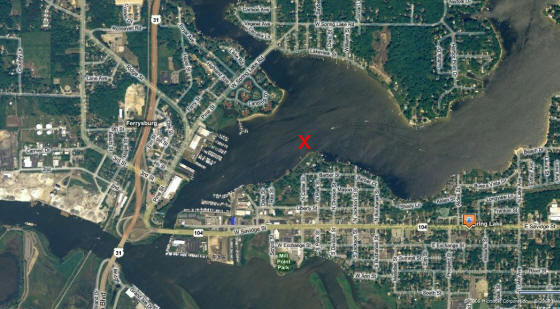
Manistee Map
We placed the mosaic image over a satellite image of the area and produced this image:
Photos used with permission, Labadie Collection, Alpena County Library
